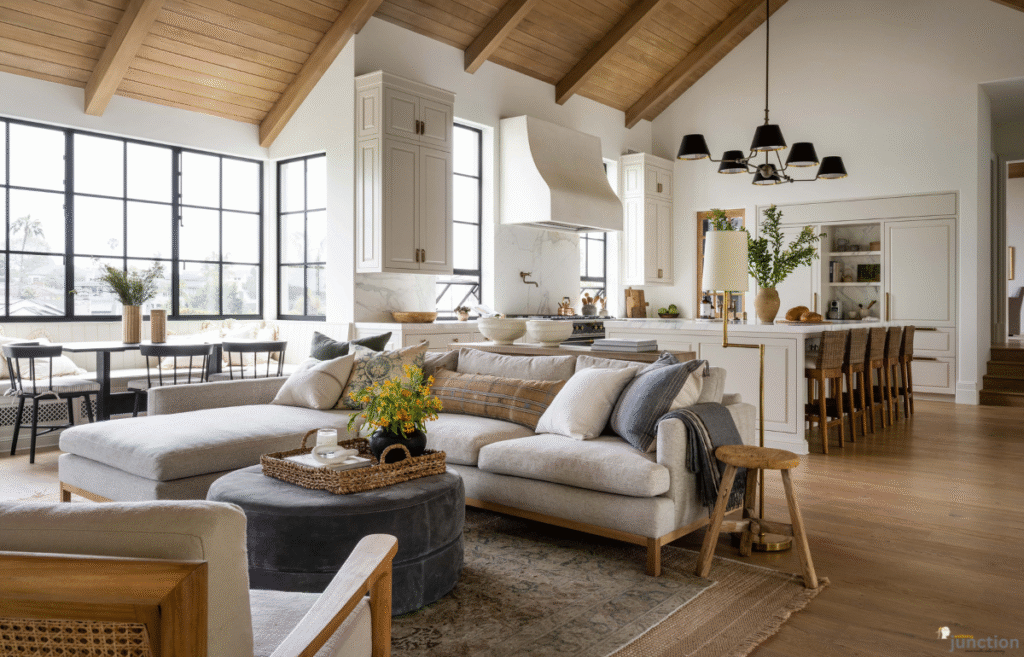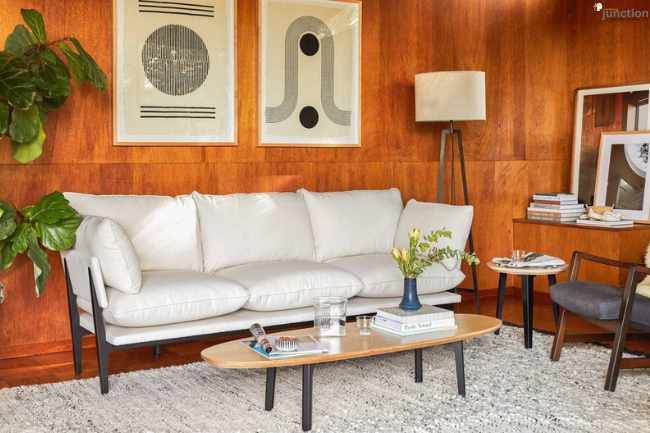Blending different wood tones can be one of the most rewarding aspects of interior design. While some may see it as a design challenge, combining various woods with purpose and balance can bring warmth, depth, and sophistication to any room. Mastering this art requires an understanding of undertones, contrast, and balance—elements that turn a simple space into a curated masterpiece.
Start with the Foundation
Your flooring sets the tone for the entire space and guides the wood tones that follow. Whether you have pale oak floors or dark walnut planks, begin by establishing one dominant wood tone as your base. From there, introduce complementary tones through furniture, décor, and accessories. Since floors and trim occupy the largest visual area, they should anchor your palette. Once that base is in place, layering becomes effortless.
Understand Undertones
Each wood finish carries an undertone—warm, cool, or neutral—that influences how different wood tones interact within a space. Identifying these subtle hues ensures your selections harmonize rather than clash. Warm woods (like cherry or maple) pair beautifully with other warm finishes, while cool woods (like ash or gray oak) complement equally cool materials. Avoid combining extremes, as this can create visual tension instead of cohesion.
For instance, pairing a honey-toned oak table with a gray-washed cabinet may feel off-balance because their undertones conflict. Instead, match warm with warm or cool with cool to achieve a seamless flow throughout your home. Observing natural light can also help—warm sunlight enhances golden hues, while cooler daylight flatters grayish wood tones.
Find Balance and Repetition
Balanced coordination makes mixed wood tones feel cohesive. Repeating tones at least twice in the same space creates a sense of rhythm and unity. For example, if your dining table features a medium walnut top, echo that tone in a picture frame or bookshelf. You can also use contrasting textures—like matte finishes against polished surfaces—to create visual interest without overwhelming the design.
Incorporate other materials such as metal, stone, or fabric to break up the dominance of wood and add layers of sophistication. Mixing materials not only modernizes the look but also prevents the room from feeling too “rustic” or heavy.
Let Art tie it all together
Artworks can play a vital role in connecting different wood tones within a room. A thoughtfully chosen canvas can bridge warm and cool hues, softening the transition between contrasting finishes. Explore curated collections at Try Artwork to discover wall art that complements your color palette, highlights natural textures, and enhances the atmosphere of your space. Art acts as the final layer that unifies the entire design story.
Real-Life Inspiration with Wood Tones
Designers often use wood tones to highlight architectural details or add depth to neutral rooms. For example, a light oak floor paired with a deep walnut coffee table and a rattan accent chair creates harmony through layered warmth. In contemporary settings, a combination of ash-gray cabinets and natural beech shelves can strike a perfect balance between modernity and comfort.
Repetition, balance, and thoughtful contrast are what transform mixed woods from a chaotic blend into a cohesive design language. Whether you’re designing a serene lake house or a cozy urban apartment, the key lies in treating each wood tone as a note in a larger composition.
Blending wood tones relies on thoughtful choices rather than flawless matching. When done right, it brings authenticity and character to your home. Start with a clear foundation, understand your undertones, maintain visual balance, and complete your look with art that ties everything together. The result? A timeless, layered, and inviting space that feels effortlessly curated—proof that even contrasting woods can live in perfect harmony.

I’m Salman Khayam, founder of Wellbeing Junction. I synthesize trusted information from research and expert guidance to create clear articles across health, wellness, and lifestyle topics.
Disclaimer: Content is for informational purposes only and is not medical advice. Consult a qualified expert regarding personal health or specialized questions.



